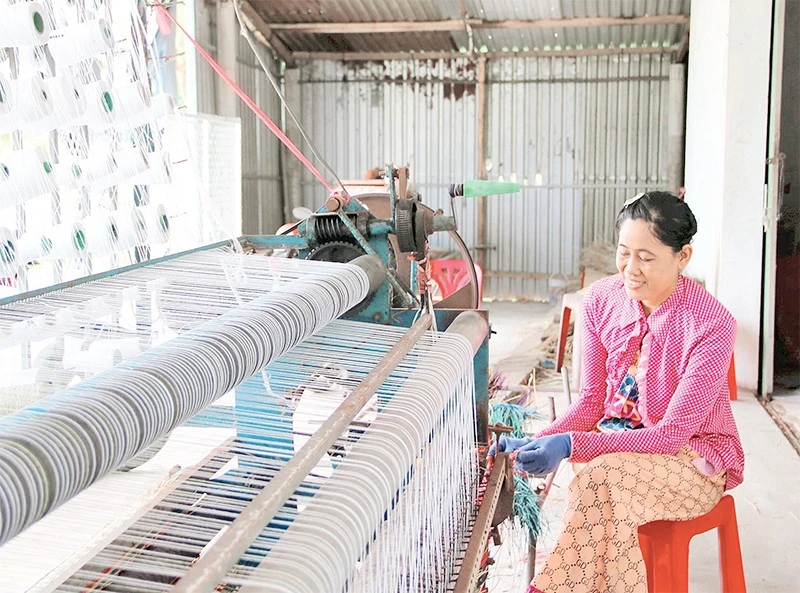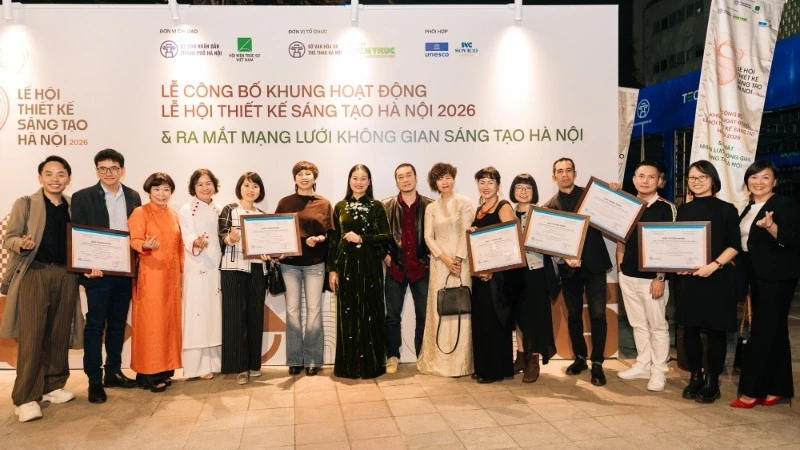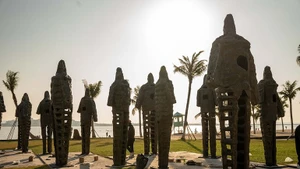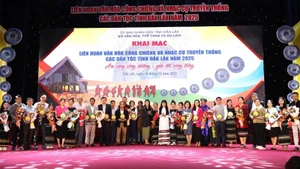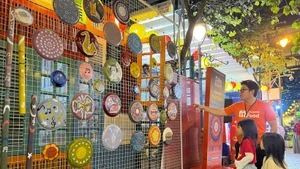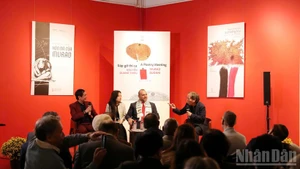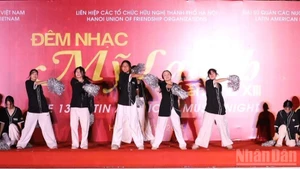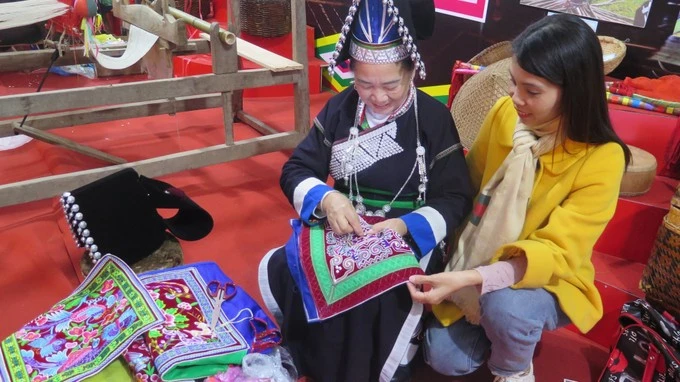Preserving and developing crafts and craft villages in riverine and coastal communes and wards of the province also helps safeguard and spread local cultural identity. Currently, these localities have over 12,000 craft establishments and 13 craft villages, providing employment for more than 30,000 rural workers.
Previously, the Nhi Long Commune handicraft village was recognised by the Tra Vinh Provincial People’s Committee (formerly) under Decision No. 1813/QD-UBND dated November 28, 2007. The village’s products are diverse, including carpets, sedge mats, coconut coir, sourced from abundant materials like sedge, coconut, and water hyacinth. Notably, the coconut coir carpet product of Ut Mung Co., Ltd. has been certified as a four-star OCOP product by the province.
Each year, individual households, cooperative groups, cooperatives, and enterprises in Nhi Long Commune produce over 1.5 million products of various kinds, supplying both domestic and export markets; they provide jobs for over 3,000 local workers, with monthly incomes from 6-8 million VND per person. In 2024, the Quyet Tam Mat-Weaving Cooperative in Duc My Commune processed more than 30,000 products, including white mats, green sedge mats, and sedge cores, providing jobs for nearly 100 rural workers. To increase productivity, Nguyen Thi Minh Trang, owner of the mat-weaving facility in Duc My hamlet, Nhi Long Commune, invested over 200 million VND to purchase 10 semi-automatic mat-weaving machines.
Trang shared: “Weaving mats with semi-automatic machines is ten times more efficient than manual weaving. Therefore, the mat-weaving facility’s revenue and profits increase significantly, and workers’ incomes double compared to before.”
Since 2021, Ut Mung Co., Ltd. and Tan Phat Coconut Co., Ltd. from the Nhi Long handicraft village have maintained production and business activities with numerous export orders for coconut coir carpets and ropes, achieving annual revenues of over 90 billion VND. With investment promotion policies and increased application of advanced technologies, the quality and productivity of the province’s craft village products have been enhanced. For example, the Nhi Long handicraft village has become vibrant with industries like coconut coir, clean soil production, and coconut coir carpets. Some production facilities in the village have begun producing organic fertilisers from main materials like coconut fibre, microorganisms, and chemicals to improve soil fertility.
According to Diep Thi Trang, Head of the Giong Dinh Hamlet Bamboo Weaving Cooperative Group in Dai An Commune, bamboo and rattan weaving is a traditional craft preserved by the local Khmer community for nearly 100 years. Previously, the Dai An Commune handicraft village mainly produced bamboo baskets, bamboo sieves, bamboo tables, chairs, and xa ngon, but incomes were unstable. After researching market demands, the Vinh Long Department of Industry and Trade, in collaboration with local authorities, organised a training course for 70 members of the Giong Dinh bamboo weaving cooperative group. Since then, members have experimented and created small, intricate woven products used for interior decoration, souvenirs, and tourism, which have been well received by the market.
For a long time, bamboo tables, chairs, beds, and ladders produced by Khmer people in Tra Tro B Hamlet, Ham Giang Commune, have served rural residents and are sold across provinces in the Mekong Delta. Along the paved road through Tra Tro B Hamlet, the sounds of engines, chisels, saws, and bamboo cutting echo continuously. Dozens of elderly and young Khmer workers diligently and carefully assemble bamboo sofa sets for the high-end market.
A representative of Thach Tri Canh bamboo sofa household business shared: The industry and trade sector supported the family with bamboo drills and chisels, helping reduce by one-third the time required to complete a bamboo sofa set. To date, most production facilities in the Ham Giang handicraft village have gradually replaced traditional products with higher-value items like bamboo sofas, cabinets, bookshelves, and agricultural product display shelves. Each year, the craft village supplies over 100,000 products to the market, generating billions of VND in revenue.
With the implementation of vocational training policies and efforts to promote and market products, the bamboo weaving and bamboo bed-making crafts of the Khmer people in Dai An and Ham Giang communes have been revived and developed in the right direction. The miniature rural household furniture set by Diep Thi Trang’s household business and the bamboo sofa set by Tri Canh’s household business have been honoured by the Ministry of Industry and Trade as outstanding rural industrial products.
Doctor Le Van Dong, Deputy Director of the Vinh Long Department of Agriculture and Environment, said: To establish a basis for planning, preserving, and developing craft villages, the agriculture sector has conducted field surveys at 10 craft villages in coastal communes and wards across the province. The results show that the socio-economic conditions in these villages still face many difficulties, especially in transportation and electricity; the labour force is mainly of general education level or trained through apprenticeship, lacking creativity and with low productivity... Based on this, the province has proposed several breakthrough solutions for craft village development in the coming time; among them are increasing investment attraction, improving equipment and production technology, diversifying products, providing vocational training for rural labourers; continuing to awaken the creative potential of artisans and skilled workers in the villages, and strengthening trade promotion. The province has determined that effectively and sustainably developing craft villages will contribute to building a civilised and modern rural area.
